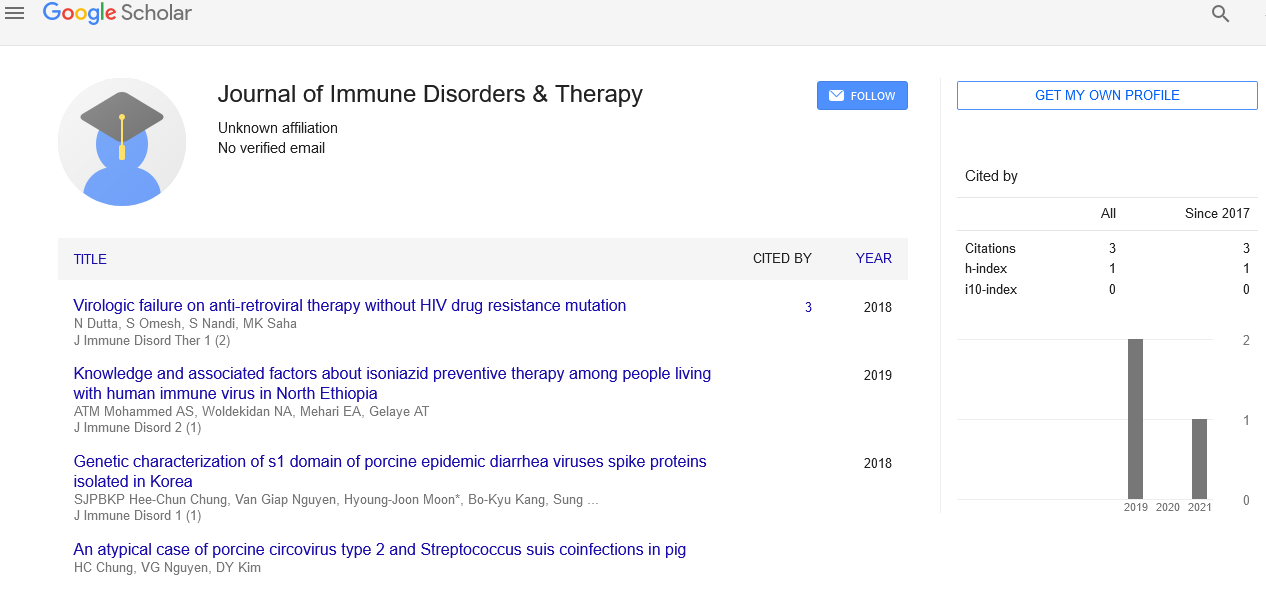
Sign up for email alert when new content gets added: Sign up
Raman spectroscopy based molecular signatures analysis of radiation response in human peripheral blood & lymphocyte
5th International Congress on Allergy and Clinical Immunology
May 02, 2022 | Webinar
Akanchha Mani Tripathi
Defence Research & Development Organization, India
ScientificTracks Abstracts: J Immune Disord Ther
Abstract :
Treatments for cancer include surgery, chemotherapy, and radiation therapy, as well as newer techniques such as interventional radiology and immunotherapy. Background: The application use of Raman spectroscopy to measure the biochemical profile of cells and tissue in health and disease may be a possible solution for many diagnostic problems in the clinical setting. Different type of treatment for cancer, radiation therapy is a standard procedure, however, local reoccurrence is a major issue with this type of treatment. A better understanding of the cell response to radiation therapy may provide insight into improved approaches for local tumour control. Genomic instability is a well-established determinant that influences by radiation response, its impact on other cell signalling pathways. The current study demonstrates, for the first time, the capability of Raman spectroscopy to detect radiation-induced damage responses in whole blood and isolated lymphocytes. Methods: Human peripheral blood from healthy donor was ex-vivo irradiated with different doses (1, 3 and 5Gy) of γ-radiation by using 60Co-irradiator. After 2h of irradiation, established Raman spectroscopic (RS) technique was used in combination with immunofluorescence staining of human whole blood and isolated lymphocytes to measures DNA damage response. All parallel metrics to the Raman spectra were analysed and compared with DNA damage assessed using γ–H2AX assay. Results: Chemometric analysis demonstrated the unique radiation related Raman signature that were determined to nucleic acid, protein, lipid and carbohydrate spectral features. Among all of these changes, the dramatic shift was observed in phosphodiester bond and β carotene content after 1, 3 and 5Gy dose of ionizing radiation. Metabolically, this signature was correlated to the extent of DNA damage. Immunofluorescence staining for γ–H2AX correlated with RS-identified genomic damage in whole blood and lymphocyte. Conclusions: Collectively, these data provide unique information into the biochemical response and a label-free approach for the prediction of DNA damage after radiation exposure. It demonstrated the utility of Raman spectra for detecting distinct radiobiological response for biodosimetry and cancer diagnosis.
Recent Publications:
1. Radiomitigation by Melatonin in C57BL/6 Mice: Possible Implications as Adjuvant in Radiotherapy and Chemotherapy. Akanchha Mani Tripathi, Shahanshah Khan, Nabo Kumar Chaudhury. In Vivo. 2022 May-Jun;36(3):1203-1221
Biography :
Akanchha is currently pursuing in Division of Radiation Biodosimetry, Institute of Nuclear Medicine and Allied Science, Defence Research & Development Organization in Delhi, India.




